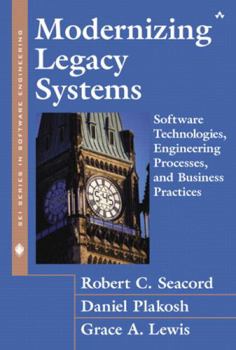Modernizing Legacy Systems: Software Technologies, Engineering Processes, and Business Practices
Most organizations rely on complex enterprise information systems (EISs) to codify their business practices and collect, process, and analyze business data. These EISs are large, heterogeneous, distributed, constantly evolving, dynamic, long-lived, and mission critical. In other words, they are a complicated system of systems. As features are added to an EIS, new technologies and components are selected and integrated. In many ways, these information systems are to an enterprise what a brain is to the higher species--a complex, poorly understood mass upon which the organism relies for its very existence. To optimize business value, these large, complex systems must be modernized--but where does one begin? This book uses an extensive real-world case study (based on the modernization of a thirty year old retail system) to show how modernizing legacy systems can deliver significant business value to any organization.














